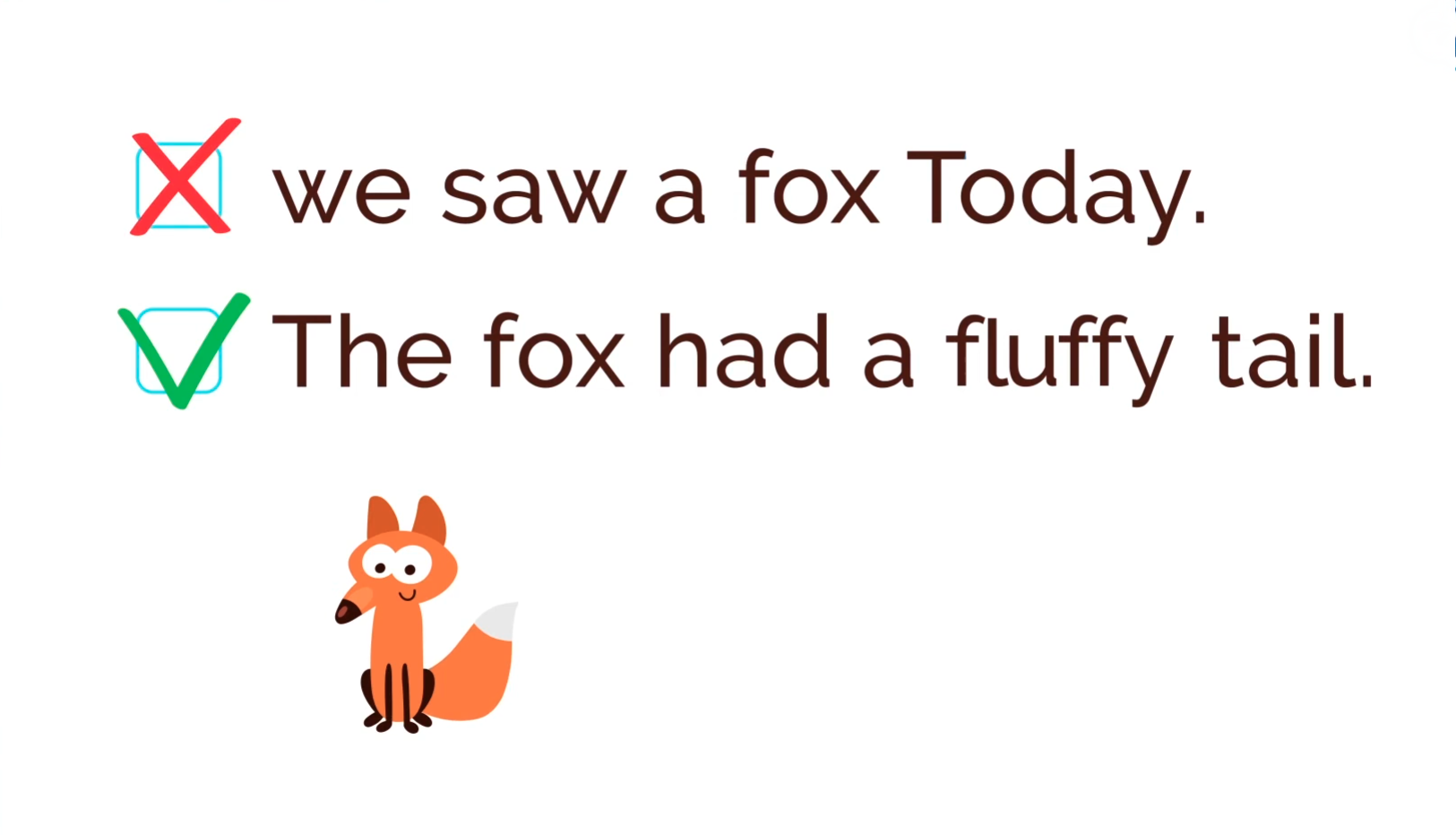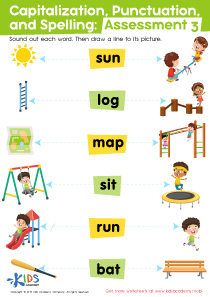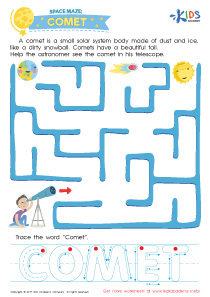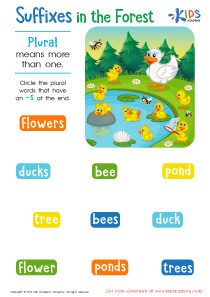Easy Punctuation Worksheets for Ages 4-8
4 filtered results
-
From - To
Discover "Easy Punctuation Worksheets for Ages 4-8," designed to make learning punctuation engaging and enjoyable for young learners. Our expertly crafted worksheets help children master basic punctuation, including periods, commas, question marks, and exclamation points, through fun exercises and colorful illustrations. Perfect for home or classroom use, these worksheets inspire confidence and improve writing skills as kids practice placing punctuation marks correctly in sentences. Visit Kids Academy to download our free, printable worksheets and watch your young ones transform into confident writers while having fun. Spark a love for writing with Easy Punctuation Worksheets today!
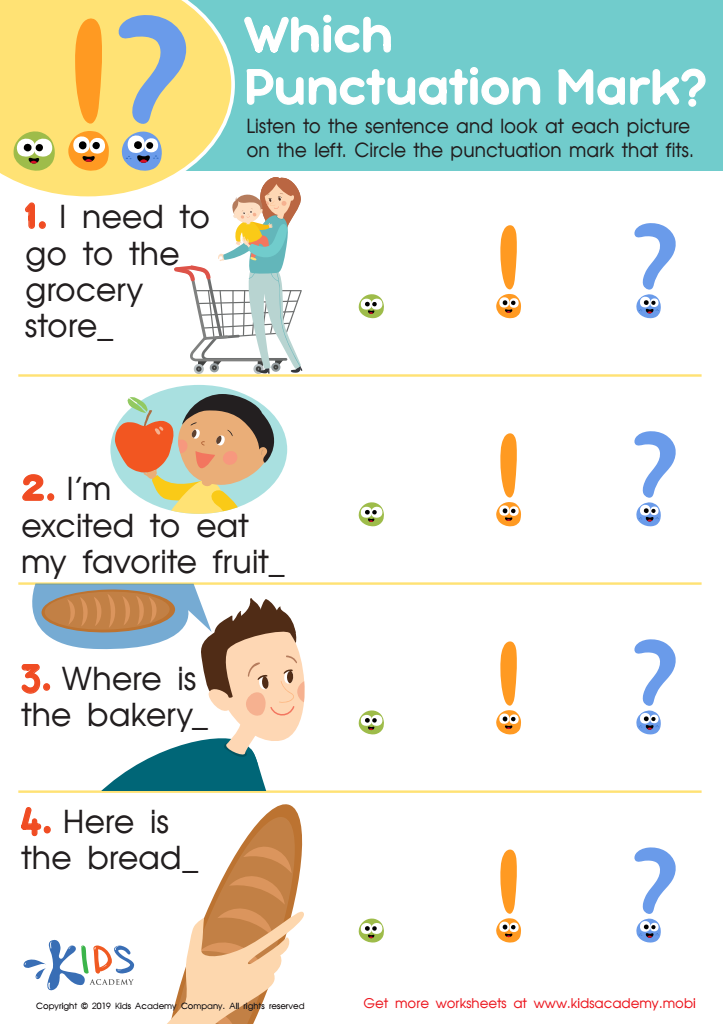

Which Punctuation Mark Worksheet
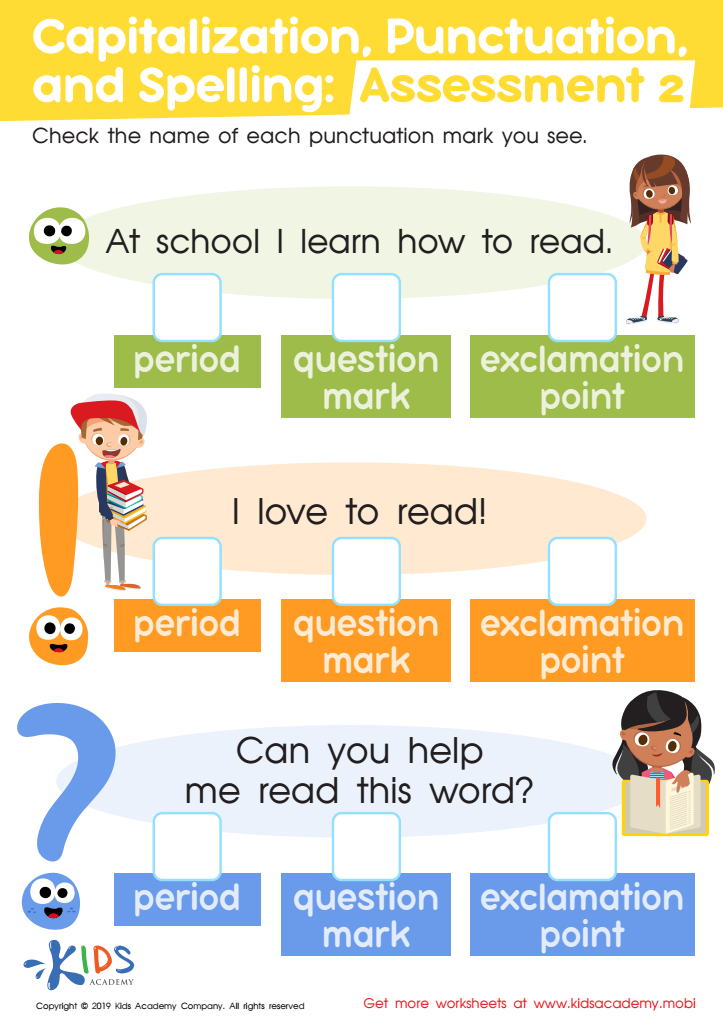

Capitalization. Punctuation. Spelling: Assessment 2 Worksheet
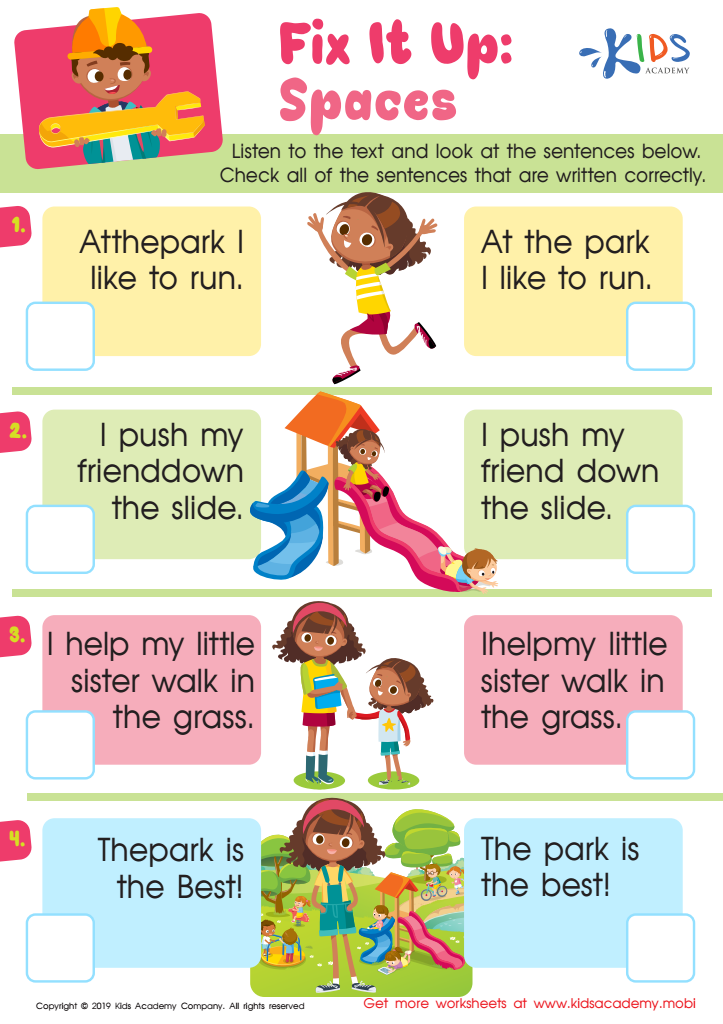

Fix Spaces Worksheet


Fix Punctuation Worksheet
Parents and teachers should care about Easy Punctuation for ages 4-8 because it sets the foundation for essential communication skills. During these formative years, children are developing their language and literacy abilities, and understanding the basics of punctuation is critical. Punctuation marks such as periods, question marks, and exclamation points help children learn to read and write sentences that are clear and convey the right emotions and meanings.
Teaching punctuation early can also boost children's confidence in expressing themselves. When young learners know how to properly punctuate their thoughts, they are more likely to engage in reading, writing, and sharing their ideas. Moreover, a good grasp of punctuation helps in better comprehension when they read stories, as it aids in understanding dialogue and narrative flow.
Additionally, early instruction in punctuation supports lifelong academic success. As children progress through school, proper punctuation becomes increasingly important in all subject areas, including science, history, and math. It also lays the groundwork for learning more complex grammar and writing skills later on.
Ultimately, caring about punctuation at an early age means creating a nurturing environment for effective communication, which is foundational for both academic performance and personal expression. This brings immense value not only to individual growth but also to overall language development in young learners.

 Assign to My Students
Assign to My Students




